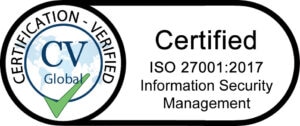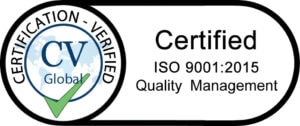Transitioning to a digital era: How to drive ROI with a complex technology stack

Home / Blog / Future-proofing / Transitioning to a digital era: How to drive ROI with a complex technology stack
Since the eCommerce surge prompted by COVID-19, organisations up and down the supply chain have been adapting to new technologies. Regardless of industry or sector, by nature of all the recent changes, technology has been deployed at an alarming pace since 2019 during COVID-19, in an emergency scenario, often with intense time pressures, to plug gaps across organisations. In the rush to modernise, one aspect of successful digital transformation that has not often been given priority, is people. For the new technologies and ways of working to deliver the desired ROI, organisations need the right tools as well as training on the new integrated systems to be able to continue to communicate effectively during the transition and beyond. The entire operation needs to adapt to a new way of working, which creates longer term cultural challenges, and requires professional services and training to be an integrated part of the technology project mix.
McKinsey reports that only 30% of digital transformation projects result in improved corporate performance. There are data failures everywhere, whereby technology projects fail at an astounding rate at enormous cost to the companies – and executives – who support them. Perhaps the harshest finding is that 90% fail to deliver any measurable ROI.
So, what’s next for warehouses and distribution centres? Read on to find out the three top ways organisations can focus to get more from their current technology mix.
1. Focus on driving adoption of existing technology
Whether a mobile device, handheld computer, or barcode scanner, the primary focus has been to keep remote and disparate parts of organisations connected and to keep critical data flows alive. The surge is not over. The GSMA is predicting mobile operators will invest $900 billion USD globally between 2020 and 2025 to upgrade their services to meet the ballooning demand for mobile connections and technology.
Today, this surge in technology deployment is realising its pitfalls as environments are becoming more complex and consequently more difficult to manage. According to a recent SOTI study, over 45% of respondents say that their organization is not properly leveraging mobile technology to help it adjust to the challenges of the post-pandemic marketplace.
“It’s clear that many businesses know there is still a great deal of potential locked up in their mobile technology,” said Shash Anand, Vice President of Product Strategy at SOTI. “They just require access to the expertise and technology needed to unlock that potential.”
One of the past reasons for IT and technical project failure rates was due to lack of executive sponsorship. The good news is that post COVID, this seems to be taking a turn in the right direction. 79% agree their organisation’s C-Suite realise the importance of mobile technology much more now than before the start of the COVID-19 pandemic.
2. Integrate technologies into one single coherent solution
Just as the device landscape becomes complex, so too do the multiple operations that consequently need to be integrated, managed and aligned for project success. When asked about the quality of mobile technology integration in their operations, 76% of respondents believe there is more their organization can do to improve their ability to be agile and adapt to new scenarios. A further 56% said that their organization’s portfolio of mobile devices has grown, but they find it hard to manage. Meanwhile, 45% of respondents said that their organization is not using mobile technology to help it adjust to the challenges of the post pandemic marketplace. Also, just 44% of respondents said their technology was completely integrated. The remaining 66% said it was partially integrated, or not integrated at all.
Having managerial time to plan for the longer term and manage digital transformation at scale is challenging with the rapid pace of business change. Coupled with a heightened uncertainty of the future and the need to consider and plan for any possible emergencies.
“We are seeing a demand for complex integration projects and management of complex projects into one single coherent solution,” says Simon Wraith, Director of Innovation, Symec UK. “Businesses don’t just need devices; they need the critical business data across their entire organisations to help drive significant improvements and drive change.”
3. Leverage automation and robotics where possible
This ‘big data’ is new to a lot of organisations. After a focus on collecting this business intelligence, knowing where to pull it from and how to interpret and analyse it, it is proving complex and time consuming. Symec’s consulting team understands this transition all too well with a focus on warehousing and automation projects of late, especially in the construction sector.
“There is no time for errors which can occur when tasks are manual. Organisations need data to be shared and understood by the many, and not just managed and understood by the few. Clear measurable data is a huge business asset and a clear driver for change.” says Simon Wraith, head of Innovation at Symec UK.
Firms need technology solutions that can offer complete supply chain visibility, monitor operations and assets in real time, whilst reducing costs and errors, and boosting efficiency and productivity at the same time. Choosing the right technology partners is crucial, not just for evidential experience on projects, but also due to in depth knowledge enabling the avoidance of specific pitfalls and ways to engage end users early in the project.
Sarah Edge, Sales Director, UK at SOTI states “Management of all operations need to be in real-time, to capture precise feedback and resolve issues, fast. The SOTI ONE Platform provides secure access to critical data. Devices can be configured, managed and updated as and when required so that warning flags can be given well in advance of any potential downtime.”
Symec partners with global Enterprise Mobility Management (EMM) solutions provider SOTI, due to their enhanced market leading capabilities, advanced research into technology, their global experience of a range of projects and in depth integration of all device types and OS, which enables a smoother customer project delivery every time.
Sign up for a FREE SOTI Trial Today













